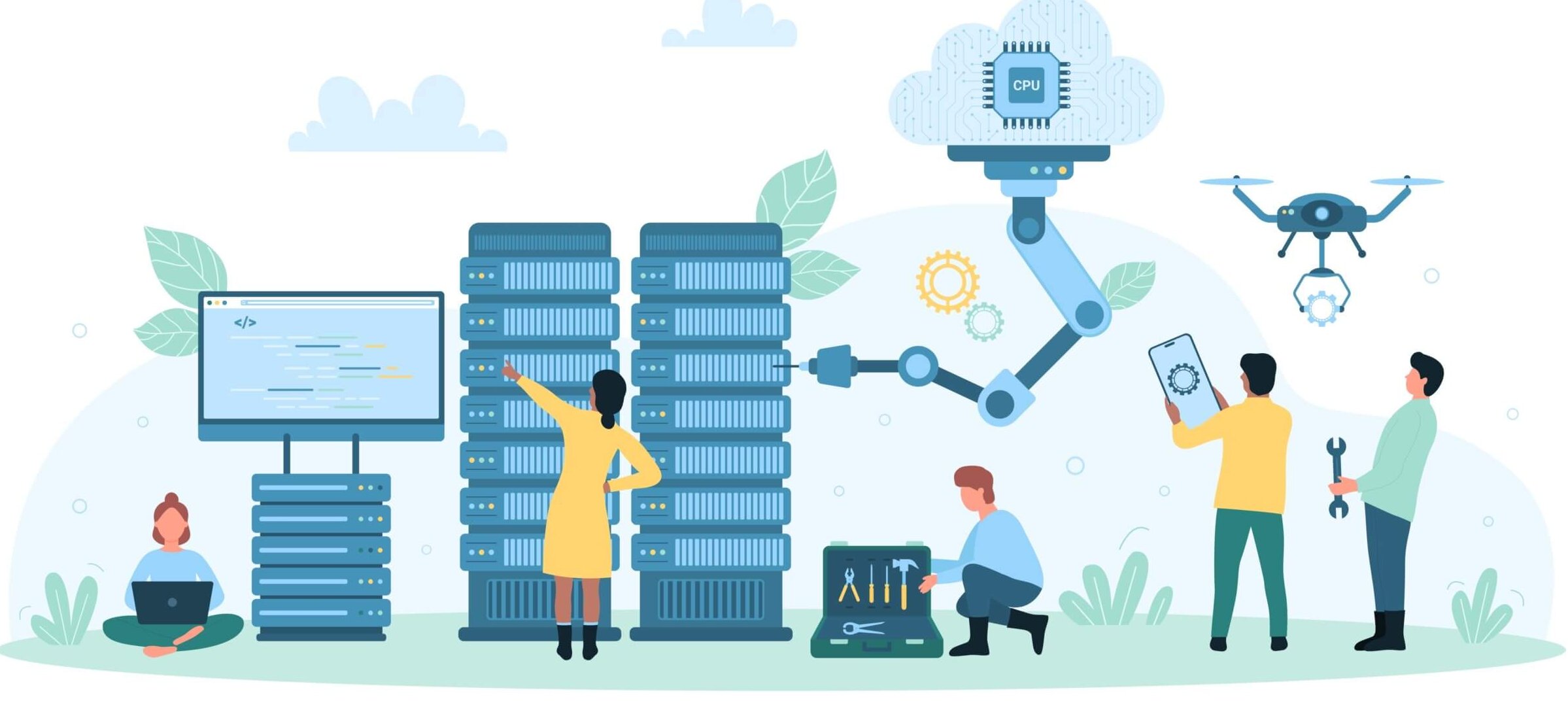The as-a-service model and shared economy has changed the way people think about products, properties, and partnerships. Netflix found massive success not by improving the DVD experience but by eliminating it altogether. Companies like WeWork, Airbnb, and Vrbo created a shared economy that reduces the need for ownership.

As a part of our business transformation in the last one year, Virtana has embraced both the sharing economy and as-as-service subscription. We adopted a WeWork-like model for our physical office space and colocation for our data center, from the traditional office space and data center we owned and managed. We are also creating and delivering a Software-as-as-a-service model for our customers.
Most of these transformational shifts in the way we live and work were made possible by the cloud. It powers the digital economy because it can flex up and down according to demand, making it indispensable for any type of business to effectively compete and thrive. And yet, managing this environment encompasses a level of choice and complexity that presents a formidable challenge for organizations, as Andreesen Horowitz lays out in “The Cost of Cloud, a Trillion Dollar Paradox.”
As I see it, we have leveraged the cloud to transform our businesses, and that will continue. But we also need to apply that same level of innovation and agility to transform the way we manage our cloud environments. We are seeing signals that this is starting to happen, which is why, when it comes to hybrid cloud, I see the coming 12 months as the year of flexibility.
Here are my top 10 hybrid cloud predictions for 2022:
Prediction 1: Public cloud at scale is cost-prohibitive.
They say you are crazy if you don’t start in the cloud; you are crazy if you stay in it. Public cloud delivers on its promise early on in the lifecycle of a company; however, as a company scales, it becomes cost prohibitive.
Cloud waste is nothing new. In fact, last year I predicted that “Cloud waste and cost will continue to hinder cloud adoption. Operational inefficiencies will decrease; however, customers will not see cost curves being bent down without proper instrumentation.” This has borne out, and as companies scale, the amount of waste in their cloud spend also scales. Enterprises need cost optimization to get the cloud right, remain cloud smart, and manage scaling and hidden costs.
Prediction 2: Colocation enables choice and on-demand cloud service consumption.
Colocation for private clouds is important because it provides the best of both worlds: your own space, more control, and technology features. Virtana had its own data center with 80 racks, but now we are moving half of our data center assets to a colo in San Jose and will transfer the other half later next year. Embracing an on-demand service for our data center simply makes better sense—and we see customers coming to that same conclusion.
Prediction 3: Cloud arbitrage comes of age.
Cloud arbitrage is the ability to choose cloud providers for specific services based on which one offers the best functionality or support at the lowest price at that time.
There is ample reason to believe that the coming year will be a transition year as the public cloud becomes more flexible and cost-effective at scale. It will be driven by two trends: more cloud providers and more co-location options resulting in healthy competition – meaning more options for the customers to leverage cloud arbitrage to drive down the cost.
This next year will feature any-cloud to any-cloud workload placement to push the limits of achievable cost optimization and provide organizations more leverage. The emergence of industry-specific clouds, and the fact that cloud flex does not necessarily require public clouds, means companies are no longer limited to just the big three providers but will have more choices. Be prepared to see smaller options emerge as reality.
Prediction 4: Hybrid cloud complexity continues apace.
Based on a May 2020 Equinix Hybrid Cloud Trends and Strategies E-Book, the number of companies “committed to or interested in a hybrid cloud strategy has increased from 81% to 93% since 2017.” How well organizations successfully manage a complex computing, storage, and services environment composed of on-premises infrastructure, private cloud services, and public clouds will drive their ability to ultimately achieve business results.
Prediction 5: Containerization accelerates application delivery.
Containers offer businesses a dedicated, cloud-based space where they can build, test, and deploy new applications. The technology offers faster delivery, agility, portability and modernization. By 2022, Gartner estimates that more than 75% of global organizations will be running containerized applications in production, up from less than 30% today.
Prediction 6: The rise of serverless design streamlines management.
In this model, users do not need to lease servers or pay for fixed amounts of storage or compute, so infrastructure scales invisibly as an application requires it. Is it really serverless? Not really—the servers are there; however, it adds a layer of abstraction between the user and the platform, so the user does not have to worry about technical details of servers—it is easy operational management that requires no system administration.
Prediction 7: Cloud computing drives increased artificial intelligence (AI) adoption.
Google CEO Sundar Pichai described AI as “more profound than electricity or fire” in terms of the effect it will have on society. Because AI platforms require tremendous processing power and data bandwidth for training and processing data, the cloud plays a key role in enabling AI services, and cloud data centers make these capabilities available to anyone.
Prediction 8: Cloud security is increasingly everyone’s problem.
Protecting data in the cloud and on premises is a responsibility that is shared between organizations and cloud service providers. As the cloud sector continues its vigorous growth—bringing in more stakeholders with more IP at stake—security will only continue to rise in importance with all constituents doing their part.
Prediction 9: Edge computing keeps data processing local.
Rather than relying on a centralized cloud, edge computing brings data collection, storage, and analysis closer to the sources generating the data. Gartner predicts 75% of business-generated data will be created and processed outside of a centralized cloud by 2025. This reduces latency and powers the use of edge devices. For example, for autonomous cars to transmit massive data volumes from thousands of devices to on-premises data centers and clouds for processing without unacceptable levels of latency, you need to build data storage and processing capabilities at the edge. Technologies such as IoT, analytics, and 5G can build edge computing capabilities so that processing and analysis happens at the location where data is generated and the insight is required.
Prediction 10: Open source will accelerate cost-effective flexibility.
A 2020 Tidelift survey revealed that 68% of enterprises evaluated open source during the COVID-19 economic downturn to help them save money. Open-source software offers a great way to build and manage cloud environments that are flexible and cost-effective, and avoid what could be expensive vendor lock-in. Faster time-to-market along with increased security are also important considerations. Open-source projects are usually inspected by many different contributors, leading to increased code quality and no secret backdoors or vulnerabilities.
Powering cloud arbitrage at every level
We have only just begun to scratch the surface on the innovations that are possible thanks to the cloud. But as more and more organizations of all stripes are jumping in, success relies as much on the way we manage our multi-cloud environments and choose cloud providers for specific services based on which one offers the best functionality or support at the lowest price at that time. I am excited to see where these trends—and the increased hybrid cloud flexibility they deliver—will take us. And I am proud that Virtana is helping our customers successfully navigate that journey.

Kash Shaikh
President, CEO, Board Member of Virtana




